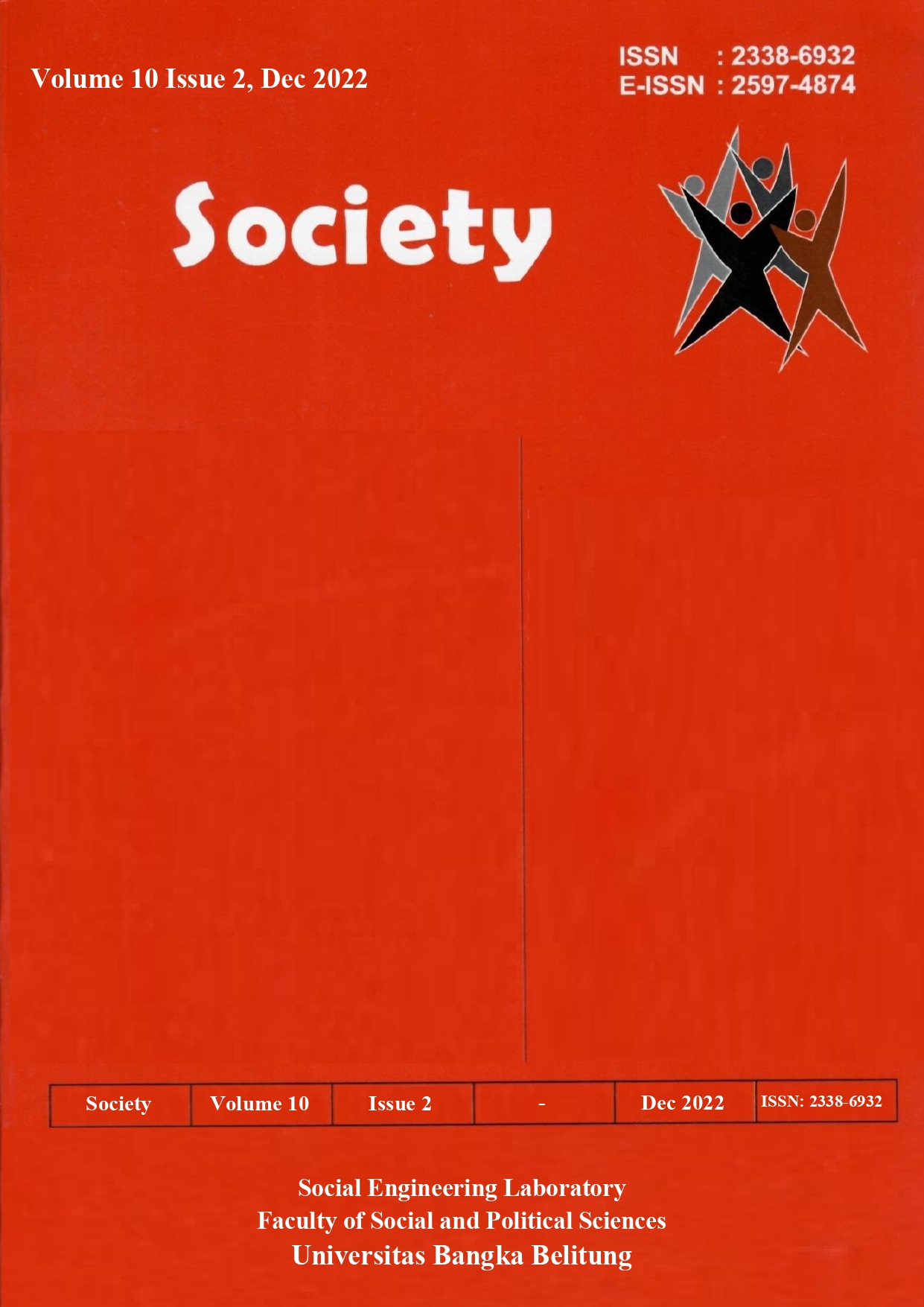Abstract
This study intended to test the effect of the quick ratio on manufacturing firms’ profitability in Indonesia. To measure the profitability, three dependent variables were used: Net Profit Margin (NPM), Return On Assets (ROA) and Return On Equity (ROE). Several variable controls were used: firm size, variability in net operating income, sales growth, gross domestic product growth, and leverage. A total of 158 manufacturing firms with published financial statements from 2012 to 2016 were analyzed using a regression method. It is found that quick ratio has positive effects on manufacturing firms’ NPM and ROA. However, the same effect is not found on ROE.
References
Adesola, W. A. (2009). Testing static trade-off theory against pecking order models of capital structure in Nigerian quoted firms. Global Journal of Social Sciences, 8(1), 61-76. https://doi.org/10.4314/gjss.v8i1.48883
Awan, M. R. (2014). Impact of liquidity, leverage, inflation on firm profitability an empirical analysis of food sector of Pakistan. IOSR Journal of Business and Management, 16(1) 104-112. https://doi.org/10.9790/487x-1617104112
Bhatia, S., & Srivastava, A. (2016). Working Capital Management and Firm Performance in Emerging Economies: Evidence from India. Management and Labour Studies, 41(2), 71–87. https://doi.org/10.1177/0258042x16658733
Bibi, N., & Amjad, S. (2017). The relationship between liquidity and firms’ profitability: A case study of Karachi Stock Exchange. Asian Journal of Finance & Accounting, 9(1), 54-67. https://doi.org/10.5296/ajfa.v9i1.10600
Dahiyat, A. (2016). Does liquidity and solvency affect banks profitability? evidence from listed banks in Jordan. International Journal of Academic Research in Accounting, Finance and Management Sciences, 6(1), 35-40. https://doi.org/10.6007/ijarafms/v6-i1/1954
Demirgünes, K. (2016). The effect of liquidity on financial performance: Evidence from Turkish retail industry. International Journal of Economics and Finance, 8(4), 63-79. https://doi.org/10.5539/ijef.v8n4p63
Ehiedu, V. C. (2014). The impact of liquidity on profitability of some selected companies: The financial statement analysis (FSA) approach. Research Journal of Finance and Accounting, 5(5), 81-90. https://www.iiste.org/Journals/index.php/RJFA/article/download/11414/11746
Etale, L. M., & Bingilar, P. F. (2016). Liquidity management and profitability: A study of selected food and beverage companies in Nigeria. International Journal of Management Sciences, 7(4), 217-225. Retrieved from https://EconPapers.repec.org/RePEc:rss:jnljms:v7i4p5
Eljelly, A. M. (2004). Liquidity‐profitability trade-off: An empirical investigation in an emerging market. International Journal of Commerce and Management, 14(2), 48-61. https://doi.org/10.1108/10569210480000179
Harrison W. T. Jr., Hongren C. T., Thomas C. W., & Suwardy T. (2014). Financial accounting: International financial reporting standards (9th ed.). USA: Pearson.
Ibrahim, S. S. (2017). The impacts of liquidity on profitability in banking sectors of Iraq: A case of Iraqi commercial banks. International Journal of Finance & Banking Studies, 6(1), 113-121. https://doi.org/10.20525/ijfbs.v6i1.650
Janjua, A. R., Asghar, A., Munir, U., Raza, A., Akhtar, N., & Shahzad, K. (2016). Influence of liquidity on profitability of cement sector: Indication from firms Listed in Pakistan Stock Exchange. Business Management Dynamics, 6(5), 1-12. Retrieved from https://www.bmdynamics.com/issue_pdf/bmd110603-%2001-12.pdf
Kementerian Investasi Republik Indonesia (2019). Industri manufaktur di Indonesia sebagai basis produksi di ASEAN. Retrieved from https://www.investindonesia.go.id/id/artikel-investasi/detail/perkembangan-industri-manufaktur-di-indonesia
Khan, R. A., & Ali, M. (2016). Impact of liquidity on profitability of commercial banks in Pakistan: An analysis on banking sector in Pakistan. Global Journal of Management and Business Research, 16(1), 53-59. Retrieved from https://globaljournals.org/GJMBR_Volume16/4-Impact-of-Liquidity-on-Profitability.pdf
Khidmat, W. B., & Rehman, M. U. (2014). The impact of free cash flows and agency costs on firm performance — An empirical analysis of KSE listed companies of Pakistan. Journal of Financial Engineering, 01(03), 1450027. https://doi.org/10.1142/s2345768614500275
Kim, C. S., Mauer, D. C., & Sherman, A. E. (1998). The determinants of corporate liquidity: Theory and evidence. Journal of financial and quantitative analysis, 33(3), 335-359. https://doi.org/10.2307/2331099
Myers, S. C. (1984). The capital structure puzzle. The Journal of Finance, 39(3), 574-592. https://doi.org/10.1111/j.1540-6261.1984.tb03646.x
Padachi, K. (2006). Trends in working capital management and its impact on firms’ performance: an analysis of Mauritian small manufacturing firms. International Review of Business Research Papers, 2(2), 45-58.
Reeve, J. M., Warren, C. S., Duchac, J. E., & Wang, W. (2014). Principles of financial accounting with conceptual emphasis on IFRS. USA: Cengage Learning Asia Pte Limited.
Richards, V. D., & Laughlin, E. J. (1980). A cash conversion cycle approach to liquidity analysis. Financial Management, 32-38. https://doi.org/10.2307/3665310
Saleem, Q., & Rehman, R. U. (2011). Impacts of liquidity ratios on profitability. Interdisciplinary Journal of Research in Business, 1(7), 95-98. Retrieved from https://irjaes.com/wp-content/uploads/2020/10/IRJAES-V3N4P297Y18.pdf
Shah, A., & Ilyas, J. (2014). Is negative profitability-leverage relation the only support for the pecking order theory in case of Pakistani firms? The Pakistan Development Review, 53(1), 33-55. https://doi.org/10.30541/v53i1pp.33-55
Soekhoe, S. G. (2012). The effects of working capital management on the profitability of Dutch listed firms (MA Thesis). University of Twente, Netherlands. Retrieved from https://essay.utwente.nl/61448/1/MSc_S_Soekhoe.pdf
Subramanyam, K. R., & John, W. J. (2009) Financial statement analysis (10th ed.). Boston: Mc Graw Hill.
Thuraisingam, R. (2015). The effects of liquidity management on firm profitability: Evidence from Sri Lankan listed companies. Research Journal of Finance and Accounting, 6(5), 129-134.
Umobong, A. A. (2015). Assessing the impact of liquidity and profitability ratios on growth of profits in pharmaceutical firms in Nigeria. European Journal of Accounting, Auditing and Finance Research, 3(10), 97-114. Retrieved from https://www.eajournals.org/journals/european-journal-of-accounting-auditing-and-finance-research-ejaafr/vol-3issue10october-2015/assessing-the-impact-of-liquidity-and-profitability-ratios-on-growth-of-profits-in-pharmaceutical-firms-in-nigeri/
Weygandt, J. J., Kimmel, P. D., & Kieso, D. E (2013). Financial accounting IFRS Edition. New Jersey: John Wiley & Sons, Inc.
Yusoff, H. B. M. (2017). The effect of liquidity and solvency on profitability: The case of public-listed consumer product companies in Malaysia (MA Thesis). University Tun Hussein Onn, Malaysia. Retrieved from http://eprints.uthm.edu.my/9865/

This work is licensed under a Creative Commons Attribution-NonCommercial-ShareAlike 4.0 International License.
Copyright (c) 2022 Lanemey Brigitha Pandeirot, Elvis Ronald Sumanti, Andrew Christian Aseng






